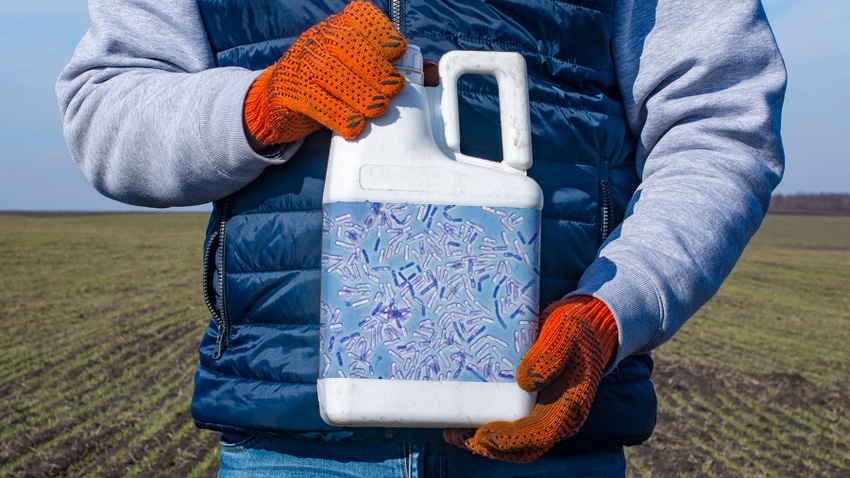
At a Glance
- Quorum sensing allows microbes to talk to one another.
- Certis tests biological products in 8,000 field trials across the U.S.
- Too many microbes can lead to crisscrossed messages.
Your microbes are talking, and what they communicate could determine how your biological performs in the field.
There is a lot of chatter going on in the rhizosphere between your plants, says Rob Gibson, senior global portfolio manager for surface biologicals with Certis Biologicals, a biopesticide supplier in the U.S. and globally in 60 countries — including Europe and an emerging market in South America.
It’s called quorum sensing where microbes rely on chemical-signaling molecules to regulate bacterial gene expression. Like human languages, the signals vary between species. And also, like real-life human conversations, sometimes more voices may not always lead to the best outcome.
Finding the right mix
There’s a fine line between using too many and using too few microbes in a biological product intended for row crops. Gibson likens it to a workplace with too many workers where one believes the other is doing the job, and it turns out no one does the work.
“When there is a lot of microbes around, they don’t have to germinate, make or put off certain metabolites,” he says. “They depend on each other, but those signals sometimes get crossed.”

SENIOR MANAGER: Rob Gibson is senior global portfolio manager for Certis Biologicals.
With a limited number of bacteria, where they're not continually communicating and seeing each other closely, they act appropriately to their environment.
“Fewer microbes provide that workforce or in terms of plants, the activities needed, to help the plant to improve health and productivity,” Gibson says. But he quickly warns: Too few microbes, and they are not helping the plant enough.
In the biological space, there are companies offering as few as four bacterial strains to those claiming 800 strains in their products. They are legit numbers, Gibson says, as PCR technology identifies them in labs.
However, only a few are the best microbes for the plant.
“Of those strains,” Gibson explains, “you’re going to have three that really outperform or bully and kill the other strains.”
His company, Certis, focuses on using those stronger strains in their biological products that target their actions toward a specific plant performance.
Narrowing the microbe field
�“We have strains that germinate where they need to whether it’s on the soil or the leaf,” Gibson says. “They outcompete harmful bacteria and make their way into the soil microbial community.”
Typically, it is good to have your biological stay in the soil for at least three years to establish itself. In turn, it weeds out those microbes that are not contributing or not wanted in that rhizosphere, such as soil diseases, Gibson explains.
Certis tests its biological products in 8,000 field trials. “We've done all the studies to determine where you need to apply the product, how much, when and how often,” he says. “We know exactly what environments and what crops benefit from our biological products.”
The company has more than 30 biological products that are OMRI Listed for organic production, but Gibson says 95% of the acres they serve are conventional. They cover crops from corn to fruit to nuts.
“Our bacteria become welcome in the soil and environment because now they are all working together to deliver the nutrients or protection the plant needs,” he adds. “They talk; we listen.”
Read more about:
BiologicalsAbout the Author(s)
You May Also Like






